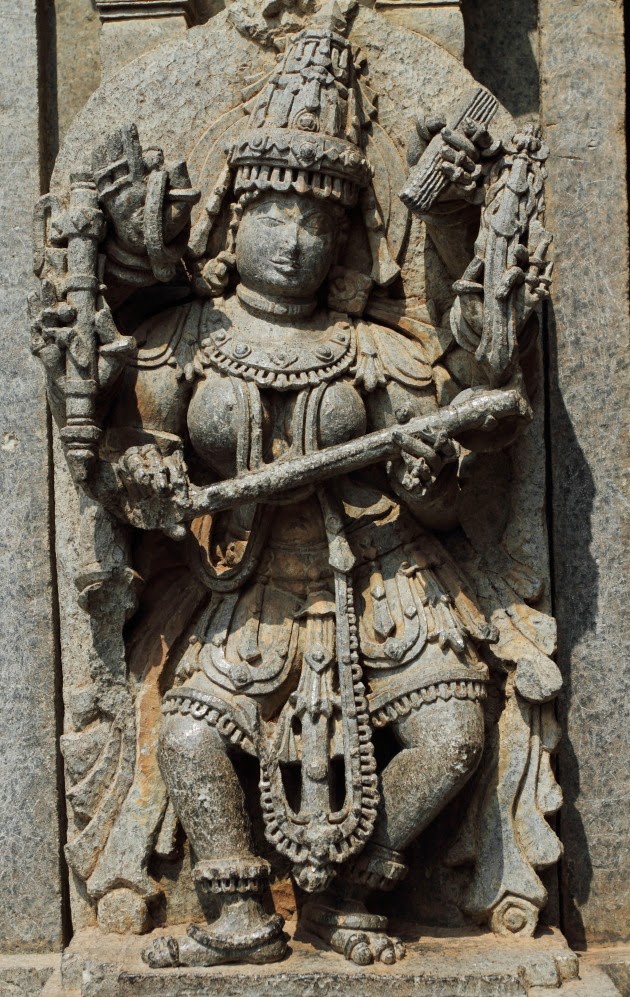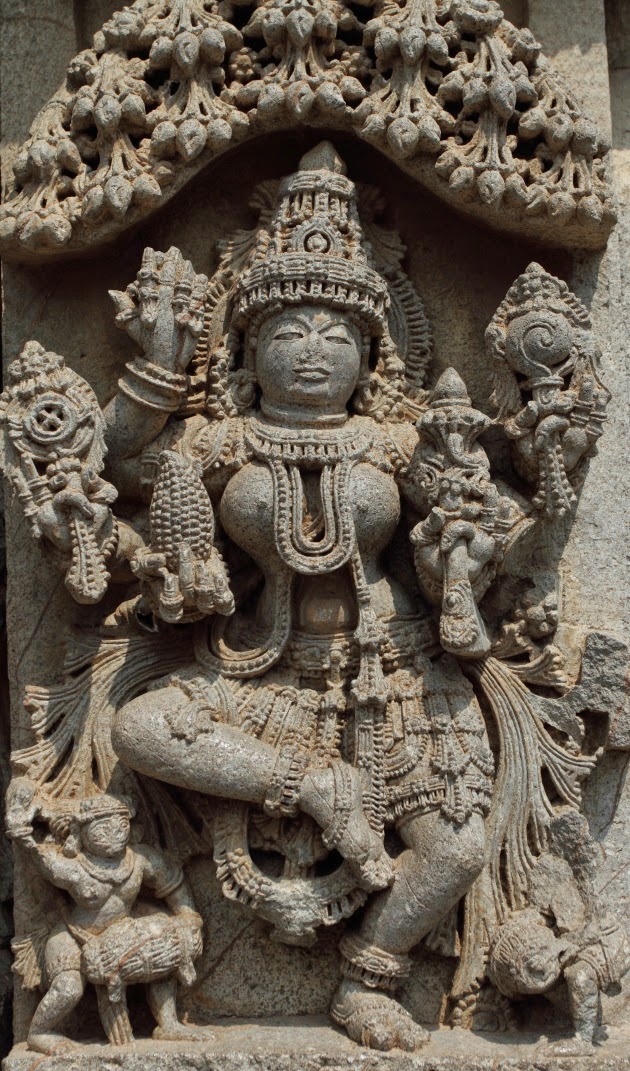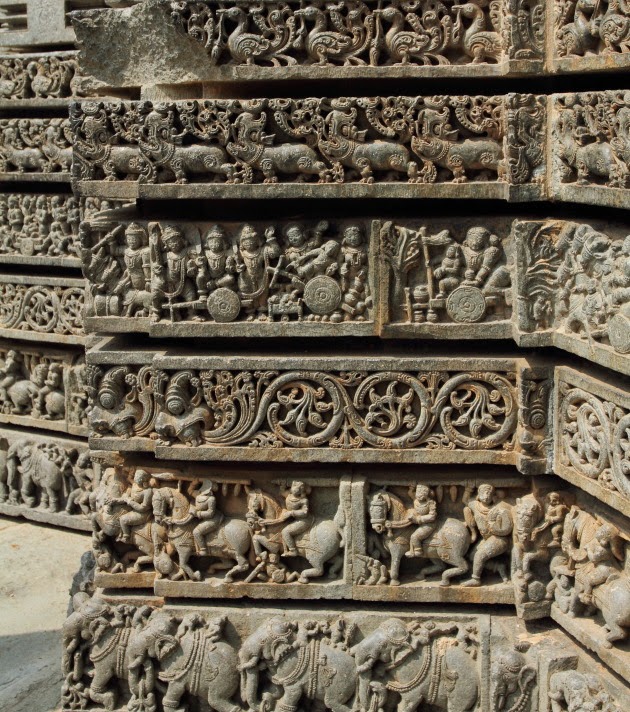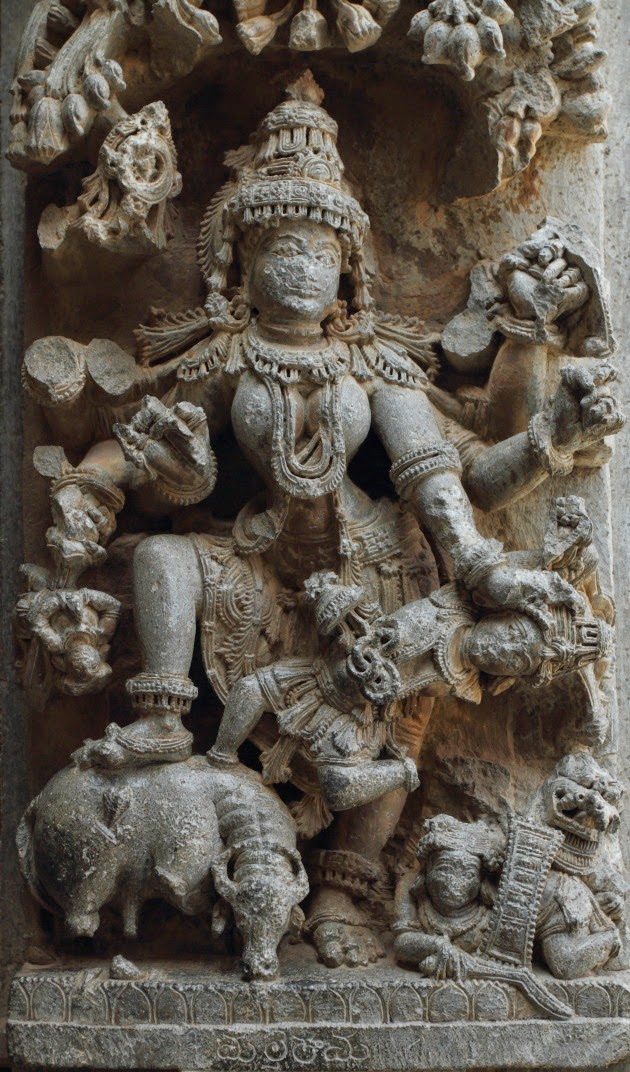
Karnataka has had mighty empires in its past. The four great ones were Chalukya, Rashtrakuta, Vijaynagara and Hoysala. Out of these, the temples from the Hoysala empire have stood the effects of time and stand in their best glory of all temples in Karnataka.

The temples at Belur and Halebid formed the crux of the Hoysala empire and hence attract the most attention. But, they did suffer damage during the wars. If you wish to see a Hoysala temple in all its glory, you have to head to Somnathpur, once a Hoysala kingdom stronghold, especially in the fertile Cauvery region.

This village was once very prosperous and hence was home to some of the most skilled craftsmen and sculptors. They designed a temple in 58 years about 750 years ago that saw very few wars and has withstood the effects of time gracefully. Thus, today, this archaeological site and non-functional temple stands in all its glory and lets the visitor admire the rich work created by the Hoysala artisans eight centuries ago.

Dedicated to Lord Vishnu, this Chennakeshava temple like the rest of all temples was built during the Hoysala reign. Built using soapstone dug from the grounds in and around Somnathpur, this Vaishnavite temple that faces east is built on a raised platform and using a shikhara architecture.

It’s specialty is its intricate sculpting and carving that depicts stories from epics, mythological events, Hoysala battles, folk lore, musical and dance events and much more. The key feature of this temple are its sculptures.

From the dancing Goddess Lakshmi to Lord Indra on an elephant; from the four headed Brahma to Saraswati, the Goddess of Learning; from the 10 avatars of Bishnu to the beautiful and intricate Mahisasaura Mardini, these temple sculptures leave the visitors in awe at their craftmanship and their attention to detail.

Some of these sculptures are a rarity in all Hindu temples, especially the likes of the Angry Ganesha (one who looks towards his right), the dancing Lakshmi, Lakshmipati, Venugopala, the statue of Brahma, etc. Even some mythological creatures like the Makara (front as a crocodile, hind of a peacock, and other body parts from an elephant, deer and fish) are bound to leave you astounded.

Each stone and pillar on the outside walls of the temple depict so many tales from our rich Hindu mythologies. The 10 avatars of Maha Vishnu, the sun god, Lord Indra, the various goddesses, the day to day scenes, Kamasutra and much more can be seen on the temple walls. It is believed that the temple was set as an educational platform for the common man, who could learn everything from the gods to epics to sex to music and much more.

If you thought the outsides of the temple were stunning, wait till you enter the sanctum sanatorium of the temple and see the rich carvings on the temple ceilings. The icing on the cake are the main statues of the 3 temple gods – Chenna Keshava, Venugopala and Janardhana. While the statues of Venugopala (Krishna) and Janardhana still exist in the temple, the original statue of Keshava exists in the London Museum and only a replica from another archaeological site has been kept here.

If you are a culture or heritage lover, this Chenna Keshava temple is bound to keep you spellbound. And what you will relish the most is the fact that this is off the beaten path and hence there are very few visitors. Enjoy it before everyone gets to hear of it.

Ideal Times, Entry Fees and Guides: It is best to visit this temple early in the day or late in the evening for better lighting and for cooler weather. Entry for Indians is INR 5 and for foreign nationals is INR 100. It is recommended to avail the services of government approved cultural guides to appreciate the meaning of the rocks and the sculptures. The typical fee of a guide is INR 350 for the group and his services last 40 to 60 minutes.

Food and Stay: Somnathpur is a small village and nothing much in terms of food and accommodation can be found here apart from some fruit hawkers. The nearest cities of Mysore and Srirangapatna would be the best bet for food and lodging.
Ideal Route from Bangalore would be –> Bangalore –> Channapatna –> Maddur –> Mandya –> turn left towards Bannur –> after Bannur turn right towards Somnathpur (the overall distance would be about 120 kms and should take you 2 to 3 hours depending on speed and breaks). One can also opt for an alternate route via Kanakapura, Malavalli and Talakad. As per Jan 2015, the roads from Mandya to Somnathpur are in good condition with the exception of small patches were the roads have small pot holes.

Timings: 9 Am to 5 PM